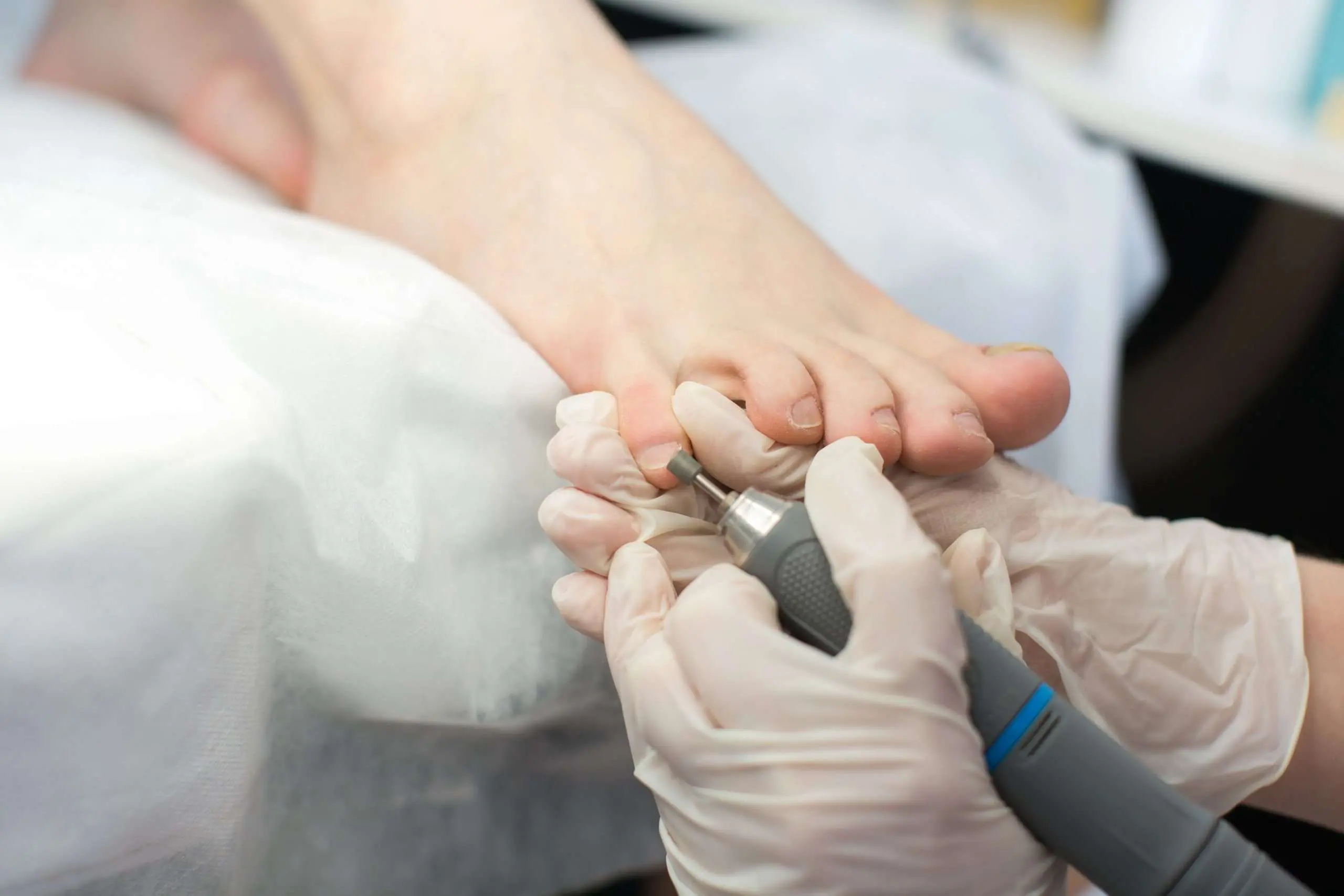
Toenails that become thick, hardened, misshapen, or even yellowed as a result of moisture or traumatic injury can affect anyone.
To help with this type of inconvenience, several treatment options are available to the patient.
If you’re dealing with deformed nails, dystrophy, or onycholysis, podiatrists will help you get to the root of the issue.
Let’s look into some of the treatment choices for thick, misshapen nails.
Toenail deformity
The term “toenail deformity” refers to a change in the shape of the toenails as a result of trauma or infection.
Toenail dystrophy, on the other hand, has to do with texture changes.
The deformations of the toenails are caused by a variety of factors.
We may consider, for example:
- Fungal infections, like nail fungus
- Trauma of the nail plate, by crushing or cutting
- Shock trauma to the nail matrix
- Poor healing after shock
- Fractures or infections of the foot phalanges
- Hammertoes
- A malignant or benign tumor
- Disturbances of the blood circulation
- Warts on the sole of the foot
- Skin diseases such as psoriasis and eczema
- Diabetes
Naturally, the treating podiatrist will conduct a series of tests to identify the exact causes of toenail deformities before prescribing treatment.
In the clinic, the podiatrist typically conducts the following tests on the nails:
- A nail fungal culture is used to detect the presence of a fungal infection that is causing the nail to shift.
- A clinical examination that can diagnose structural flaws that can lead to deformities like ingrown nails.
Treatments for a toenail deformity
Once the cause of the toenail deformity has been clearly identified, the podiatrist will establish an individualized intervention plan.
The most common methods for dealing with toenail deformity are:
- Manual cutting and milling of the nail.
- A splint for the problematic toenail (orthonyxia)
- Laser treatment
- Surgery for ingrown toenails (matricectomy)
- Surgery for recurrent plantar warts
- A prescription for a topically applied antifungal.
Treatments for the thickening of the toenail
Nail thickening, unlike nail deformity, is a natural occurrence that happens with age.
Premature thickening in a younger person, on the other hand, suggests inflammation or excessive pressure on the foot.
It’s crucial to pay attention to this because it can cause the toenail to detach from its bed, resulting in issues like an ingrown toenail.
Furthermore, a thickened toenail is difficult to preserve properly, making treatment even more expensive.
Thickened nails are treated similarly to deformed nails.
This form of nail, however, requires special attention, particularly if it seems to be infected.
Here are a few pointers on how to take care of thick nails:
- Before trimming the toenails, soak them in hot water for at least 5 minutes.
- The nail clipper should be properly disinfected.
- Avoid using a nail file because it can do more harm to the toes.
- Consult a podiatrist for foot care if a yeast infection appears to be the source of the problem
Treatments for onycholysis
Onycholysis is a complete or partial detachment of the toenail that may occur as a result of infection, trauma, or inflammation.
It is thought to be caused by the following:
- Too much scrubbing of the nails
- Inflammation of the skin such as psoriasis
- Contamination from corrosive or chemical substances
- Taking certain antibiotics
- Onychomycosis
- Trauma to the nail, for example, from wearing the wrong shoes on a regular basis
The podiatrist or dermatologist may recommend these therapeutic measures to treat onycholysis:
- Corticosteroids as ointments.
- Emollients and methods for nail reshaping.
- Regular foot care to keep the nails from collecting too much moisture.
- Orthoplasty, which alters the alignment of the toes and nails in order to reduce microtrauma
- Orthopedic footwear or shoes that are better suited to the shape of the feet
Recognizing toenail problems
It’s not always easy to tell the difference between a problematic toenail and a good toenail.
If you think you may have an infection, keep the following in mind:
- The nail is of an unusual color, ranging from yellow to brown to orange to opaque white.
- Ingrown toenails are a common occurrence.
- Trimming the troublesome nail is difficult.
- Horizontal grooves appear under the nails.
- The nail is brittle.
- The tip of the nail becomes rounded and smaller.
If you have more than one of these symptoms, you should consult a medical professional, such as a podiatrist.
Your doctor will be able to evaluate your symptoms and provide you with treatment options.